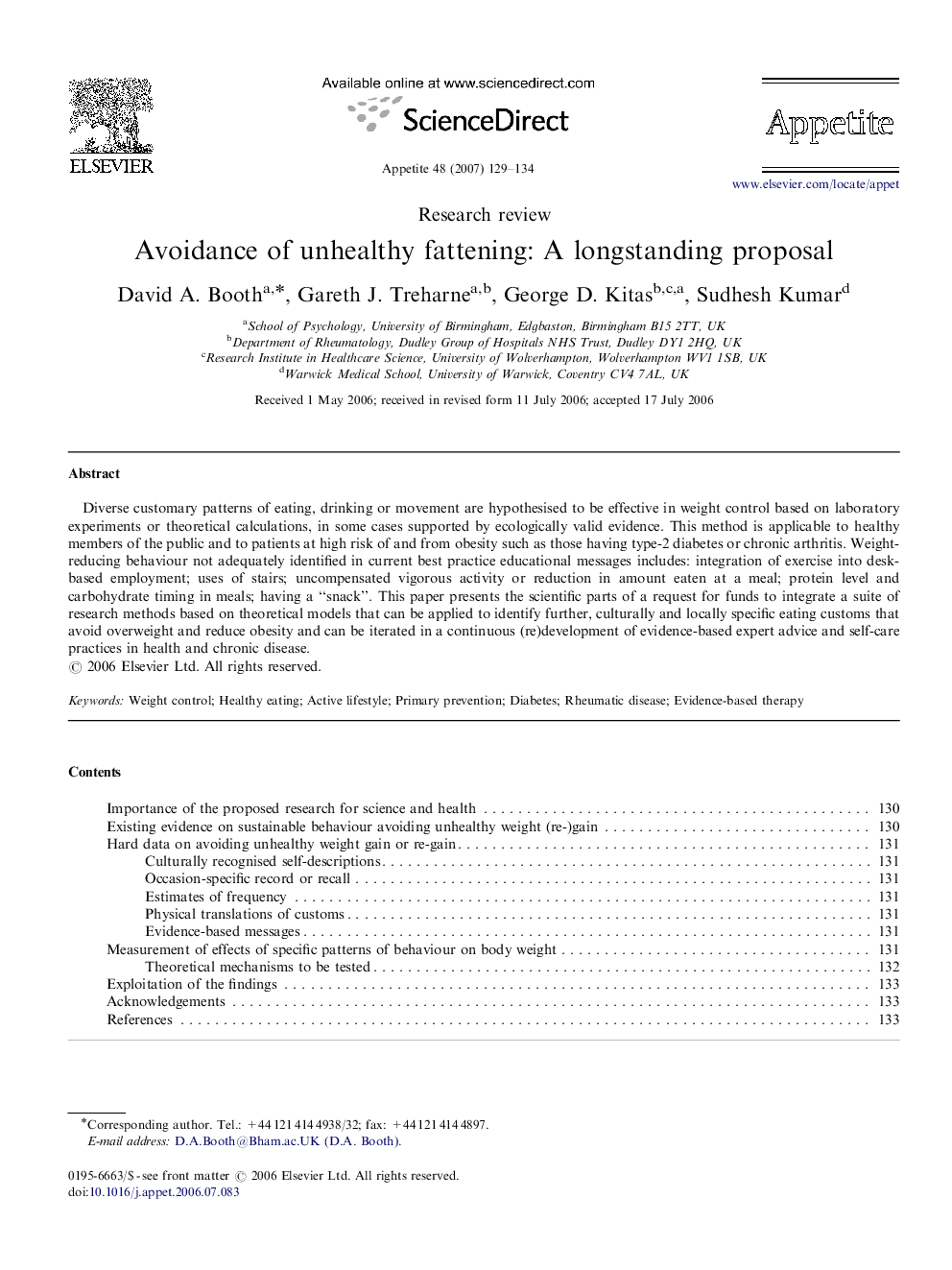| Article ID | Journal | Published Year | Pages | File Type |
|---|---|---|---|---|
| 941847 | Appetite | 2007 | 6 Pages |
Diverse customary patterns of eating, drinking or movement are hypothesised to be effective in weight control based on laboratory experiments or theoretical calculations, in some cases supported by ecologically valid evidence. This method is applicable to healthy members of the public and to patients at high risk of and from obesity such as those having type-2 diabetes or chronic arthritis. Weight-reducing behaviour not adequately identified in current best practice educational messages includes: integration of exercise into desk-based employment; uses of stairs; uncompensated vigorous activity or reduction in amount eaten at a meal; protein level and carbohydrate timing in meals; having a “snack”. This paper presents the scientific parts of a request for funds to integrate a suite of research methods based on theoretical models that can be applied to identify further, culturally and locally specific eating customs that avoid overweight and reduce obesity and can be iterated in a continuous (re)development of evidence-based expert advice and self-care practices in health and chronic disease.
